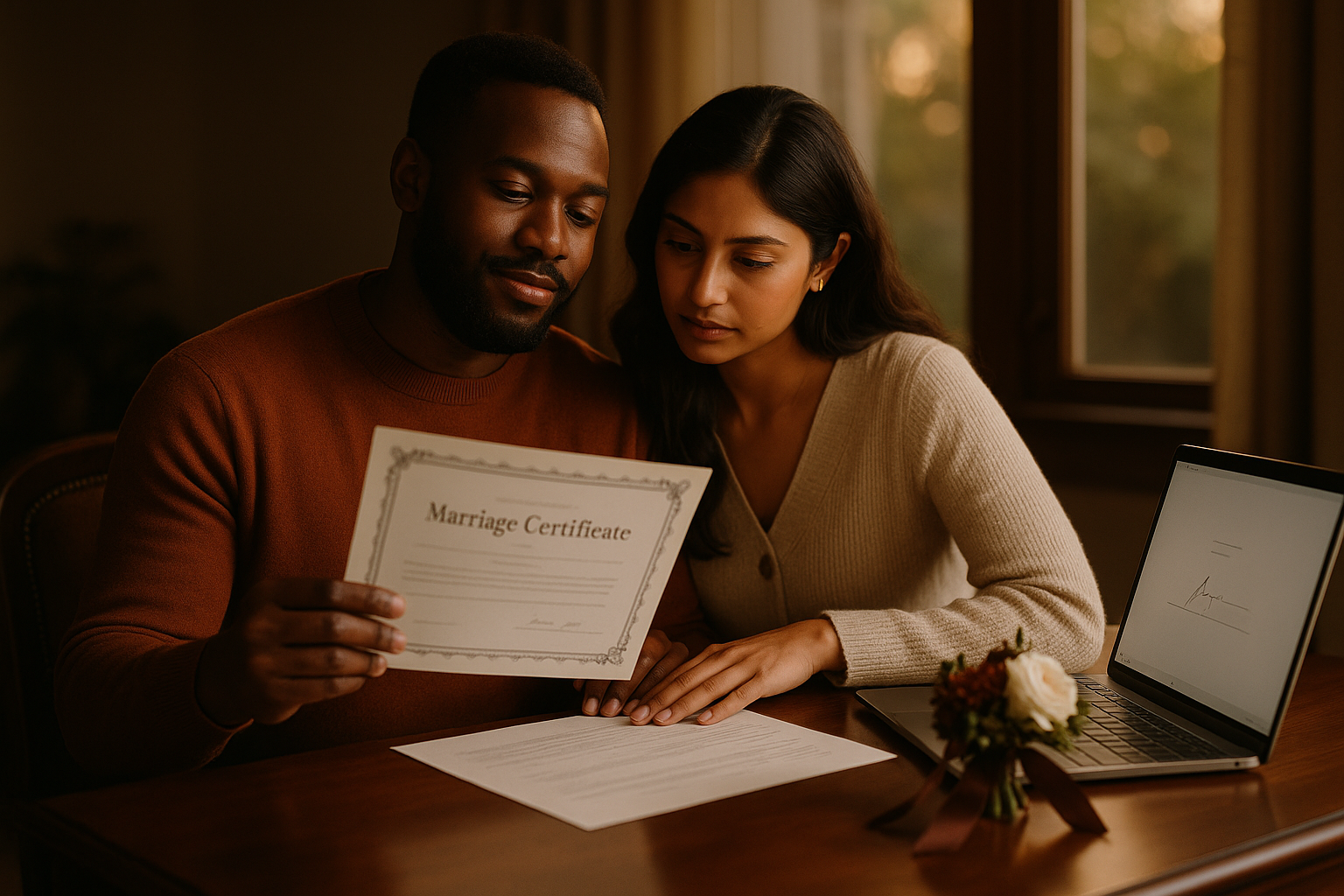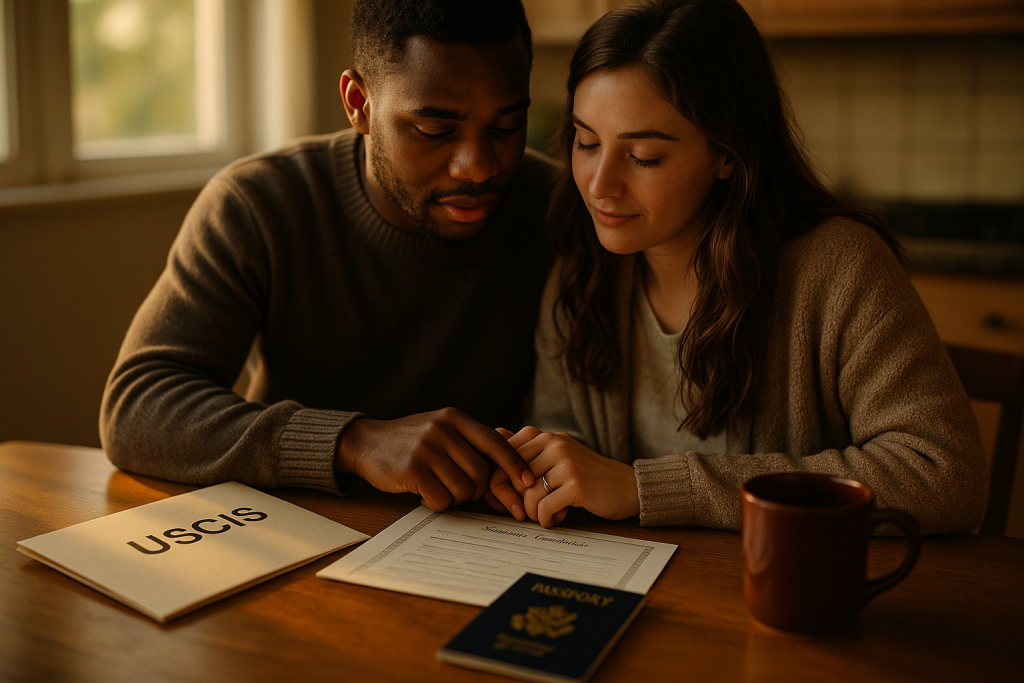In today’s digital age, couples are increasingly opting for online weddings, especially when separated by distance or other constraints. If you’ve tied the knot virtually and are now looking to bring your spouse to the United States, you might be wondering: Can an online marriage certificate be used for a spouse visa application? Let’s explore this together.
Understanding Online Marriages and Their Legality
Online marriages, often conducted via platforms like Zoom, have become a viable option for many. States such as Utah have legalized virtual ceremonies, allowing couples to obtain a legitimate marriage certificate without being physically present. However, the key question remains: Does U.S. Citizenship and Immigration Services (USCIS) recognize these marriages for immigration purposes?
USCIS Stance on Virtual Marriages
USCIS does recognize virtual marriages under specific conditions. The marriage must be legally valid in the jurisdiction where it was performed, and crucially, the couple must consummate the marriage after the ceremony. This means that after your online wedding, you and your spouse need to be physically together to validate the union in the eyes of immigration authorities. Documentation such as travel itineraries, hotel reservations, and photos together can serve as evidence of consummation. For more details, refer to the USCIS guidelines on bringing spouses to live in the United States. USCIS: Bringing Spouses to Live in the United States
Steps to Apply for a Spouse Visa with an Online Marriage Certificate
Embarking on the spouse visa journey with an online marriage certificate involves several key steps:
1. Ensure Legal Validity of Your Online Marriage
First and foremost, confirm that your virtual marriage is legally recognized in the state or country where it was performed. For instance, marriages conducted in Utah are considered valid and provide official marriage certificates. Can You Marry Online and Use It for a Spouse Visa? Everything You Need to Know
2. Gather Essential Documentation
Prepare a comprehensive set of documents to support your visa application:
- Marriage Certificate: Obtain the official certificate from the jurisdiction where your online marriage was performed.
- Proof of Consummation: Provide evidence that you and your spouse have been physically together after the online ceremony. This can include travel records, photos, and affidavits from friends or family.
- Certified Translations: If any of your documents are in a language other than English, ensure they are accompanied by certified translations. This is crucial to avoid delays or denials. Learn more about handling document translations for your spouse visa. How to Handle Document Translation for Your Online Spouse Visa
3. File the Appropriate Forms
Depending on your status:
- U.S. Citizens: File Form I-130, Petition for Alien Relative. If your spouse is already in the U.S., you can concurrently file Form I-485, Application to Register Permanent Residence or Adjust Status.
- Permanent Residents: File Form I-130. Once approved and a visa number becomes available, your spouse can apply for an immigrant visa through consular processing. Detailed instructions are available on the USCIS website. USCIS: Bringing Spouses to Live in the United States
Proving a Genuine Marriage
USCIS places significant emphasis on the authenticity of the marital relationship. To demonstrate this:
- Joint Financial Accounts: Provide statements from shared bank accounts or credit cards.
- Shared Residency: Present lease agreements or utility bills with both names.
- Affidavits: Obtain statements from friends or family attesting to the legitimacy of your relationship.
- Photographic Evidence: Include photos from your wedding and other shared experiences. For a comprehensive guide on proving a genuine marriage, check out this resource. Proving a Genuine Marriage to USCIS: What to Expect
Common Challenges and How to Overcome Them
While online marriages offer convenience, they can present unique challenges in the visa application process:
- Consummation Proof: Ensure you have clear evidence of being together physically after the online ceremony.
- Document Translation: Use certified translation services to avoid issues with non-English documents. Certified Translations
- Legal Recognition: Verify that your online marriage is recognized in the jurisdiction where it was performed.
Frequently Asked Questions
1. Is an online marriage certificate valid for a U.S. spouse visa application?
Yes, provided the marriage is legally recognized in the jurisdiction where it occurred and the couple has consummated the marriage afterward.
2. What constitutes proof of consummation?
Evidence such as travel itineraries, hotel bookings, photos together, and affidavits from witnesses can serve as proof.
3. Do I need to translate my marriage certificate if it’s not in English?
Absolutely. USCIS requires certified translations of all documents not in English. Certified Translations
4. How can I demonstrate that my marriage is genuine?
Provide joint financial documents, shared residency proof, affidavits from acquaintances, and photos from your wedding and other shared events.
5. What if my online marriage isn’t recognized in the jurisdiction where it was performed?
It’s essential to ensure legal recognition. If not recognized, consider alternative options or consult with an immigration attorney.
Conclusion
Embarking on the journey to bring your spouse to the U.S. with an online marriage certificate is entirely feasible with careful planning and thorough documentation. At Virtual Same Day Marriage, we’re here to assist you every step of the way, from conducting your virtual wedding to navigating the visa application process. Feel free to reach out to us for personalized guidance and support. Contact Us




